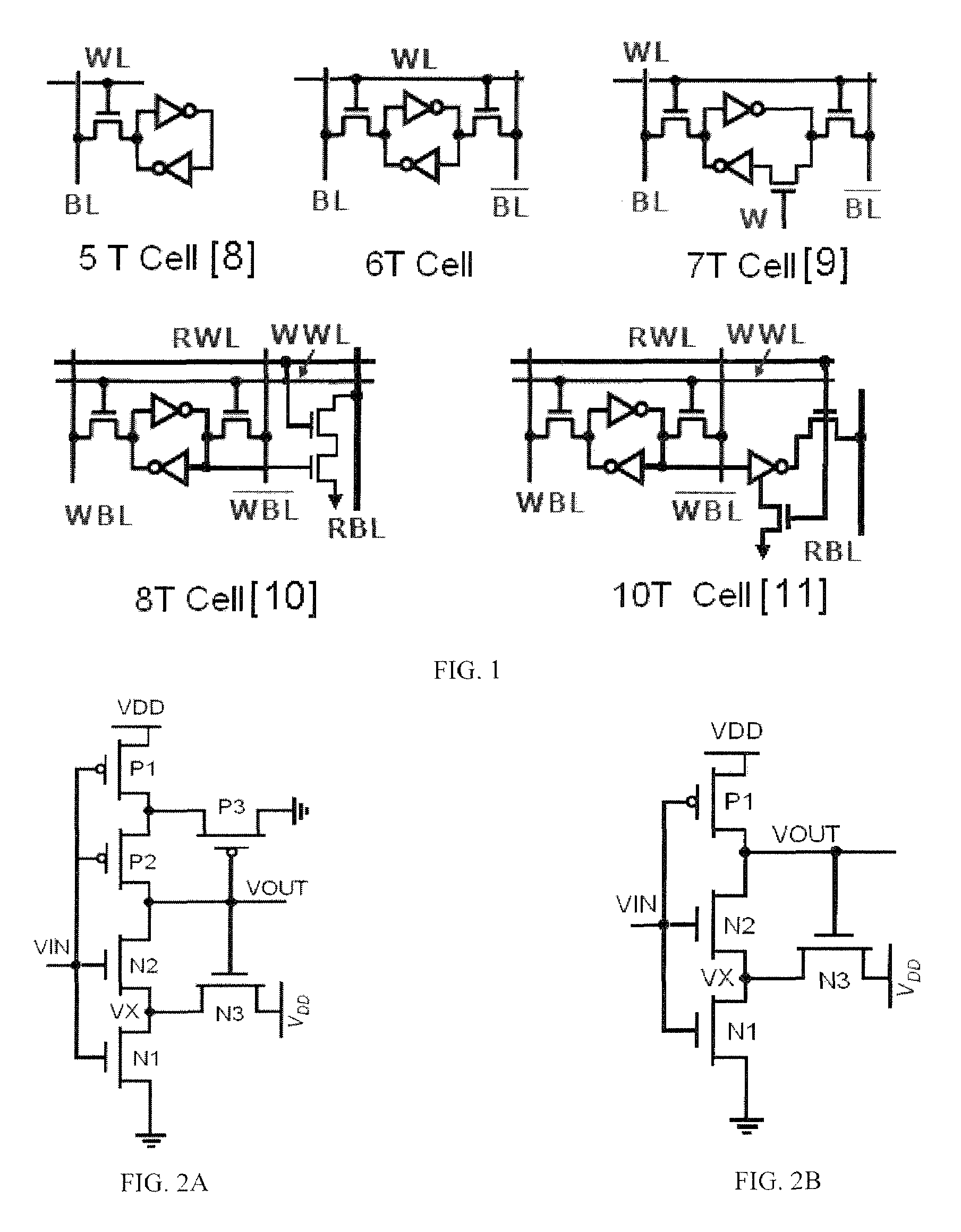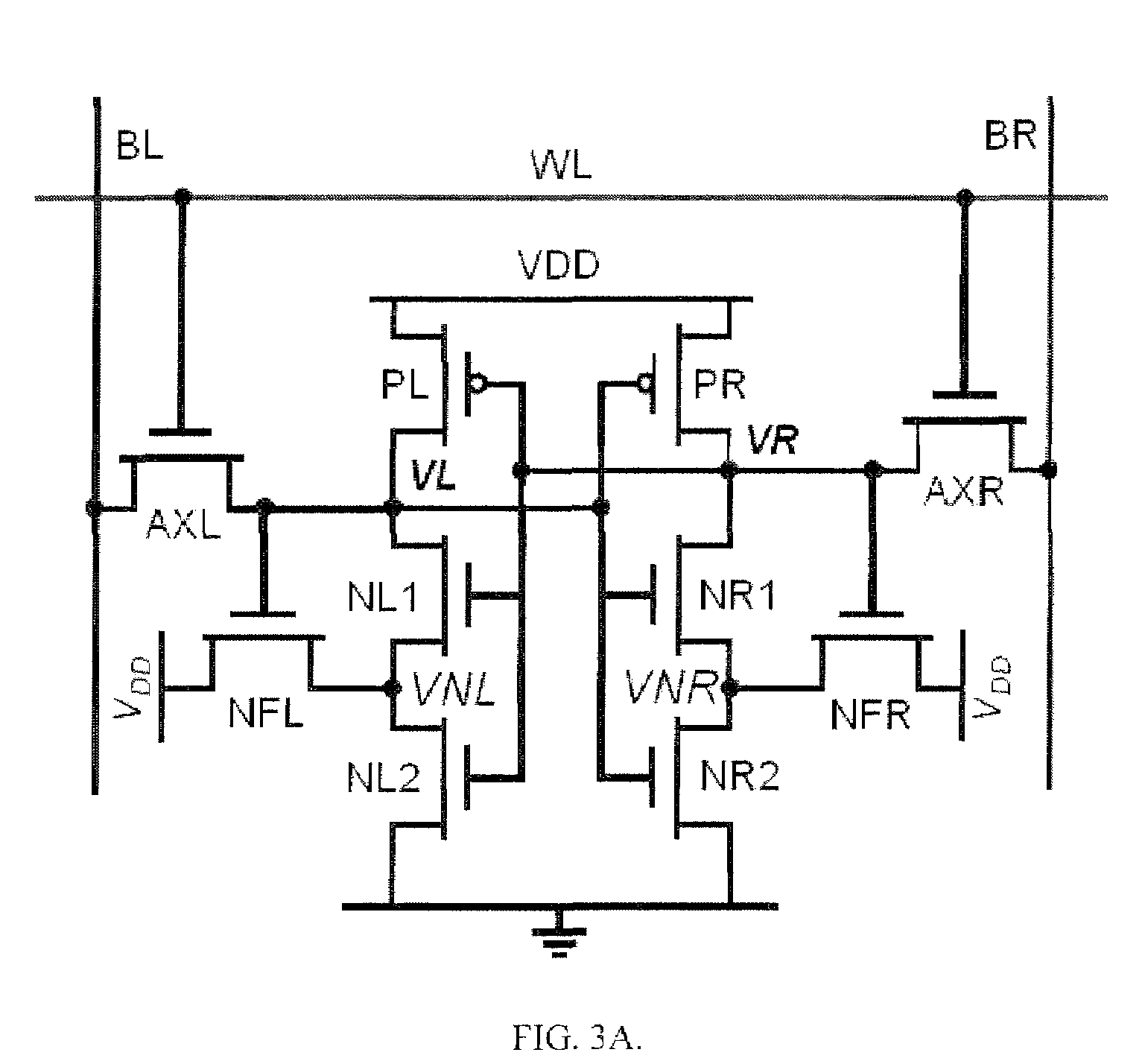Memory cell with built-in process variation tolerance
a memory cell and process variation technology, applied in the field of memory cell with built-in process variation tolerance, can solve the problems of threshold voltage mismatch between adjacent transistors in memory cells, leakage current increases with the reduction of device dimensions, and nano-scaled sram bitcells having minimum sized transistors are vulnerable to inter-die, etc., to improve process variation tolerance, less sensitive to process variations, and better read stability
- Summary
- Abstract
- Description
- Claims
- Application Information
AI Technical Summary
Benefits of technology
Problems solved by technology
Method used
Image
Examples
Embodiment Construction
[0042]For the purpose of promoting an understanding of the principles of the invention, reference will now be made to the embodiments illustrated in the drawings and specific language will be used to describe the same. It will nevertheless be understood that no limitation of the scope of the invention is thereby intended, such alterations and further modifications in the illustrated device and such further applications of the principles of the invention as illustrated therein being contemplated as would normally occur to one skilled in the art to which the invention relates.
[0043]The Schmitt Trigger based (ST) 10 transistor SRAM cell focuses on making the basic inverter pair of the memory cell robust. At very low voltages, the cross-coupled inverter pair stability is of concern. To improve the inverter characteristics, a Schmitt trigger configuration is used. A Schmitt trigger is a device having dual threshold action, i.e., hysteresis. The device has a switching threshold which is h...
PUM
 Login to View More
Login to View More Abstract
Description
Claims
Application Information
 Login to View More
Login to View More - R&D
- Intellectual Property
- Life Sciences
- Materials
- Tech Scout
- Unparalleled Data Quality
- Higher Quality Content
- 60% Fewer Hallucinations
Browse by: Latest US Patents, China's latest patents, Technical Efficacy Thesaurus, Application Domain, Technology Topic, Popular Technical Reports.
© 2025 PatSnap. All rights reserved.Legal|Privacy policy|Modern Slavery Act Transparency Statement|Sitemap|About US| Contact US: help@patsnap.com



